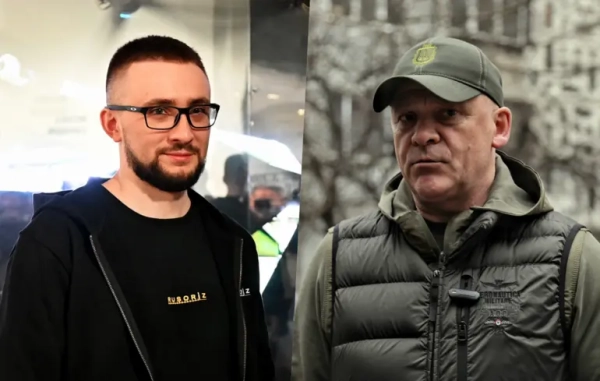
Last week, I tweeted out a few links to pieces of media analysis I’d found interesting. One was to danah boyd’s excellent speech on media manipulation, strategic amplification, and responsible journalism. Another was to BuzzFeed reporter Charlie Warzel’s newsletter describing how a recognition of the alt-right’s media manipulation techniques had changed his reporting. A third was to Rebecca Lewis’s new Data & Society report mapping the rise and functioning of YouTube’s “reactionary right,” which I described as “one of the must underestimated forces in politics right now.”
It was that third one that attracted some controversy. The Data & Society report is trying to trace the social and algorithmic boundaries of an emergent media ecosystem, but a lot of the folks swept up in the report are angry about it, and angry at me for linking to it. For instance, YouTube personality Dave Rubin tweeted:
I’ll take the bait, because the underlying issue here is important to understanding politics in 2018. We’re in a period of massive demographic and social change, and all that change is creating a powerful backlash. The coalition being built by that backlash, the coalition Rubin is a part of, is best understood as a reactionary movement because, well, that’s what it is — a movement united by opposition to changes it loathes.
Reactionary, in this context, isn’t a slur; it’s a lineage, and it has a specific meaning that’s useful in understanding this group. And whether you support legal pot has nothing to do with it.
The intellectual dark web, the reactionary right, and the difficult work of mapping new ideologies
Let’s start in familiar territory.
In the context of American politics, I’m on the left. That’s also true for my colleague Matt Yglesias, who has extremely similar views to me on taxation and health care but extremely different views on veganism, which is an important political commitment to me but not to him. Stranger yet, it’s also true for the hosts of Chapo Trap House, a left-wing podcast that loathes me even though our substantive differences would look modest to a libertarian. And it’s arguably true for all kinds of lefty fringe types whose views I’d find abhorrent (anti-vaxxers, say).
If someone wrote a report trying to map the modern left, you’d quickly come up with a list that connects me to people I like but disagree with on some issues, people I dislike, people who dislike me, and people whom I don’t even think of as in my universe.
Which is all to say that mapping broad ideologies is an odd and imprecise business, and it’s particularly odd to the people caught up in it, who experience the fractiousness of their side at least as much as they experience its cohesion.
Lewis’s report is trying to map the emergence of a new coalition on the right, one driven by a reactionary impulse and centered on YouTube. If you’re over 30 and don’t use YouTube much, it’s almost impossible to convey how central the platform is to young people. But spend much time talking to college students about where they get their political information and you’ll find YouTube is dominant; what’s happening on the platform is important to our political future, and badly undercovered.
Lewis is interested in how this ecosystem is being shaped by both social and algorithmic dynamics. The social side is familiar: Hosts appears on each other’s shows, do events together, and cross-pollinate their audiences. The algorithmic side is less familiar: YouTube’s powerful recommendation engine learns who’s connected to whom, adds in a preference for extreme and outlandish content, and thus pushes the entire ecosystem in a more radical direction. (Controversially, Lewis suggests YouTube should cut the most extreme of these shows off from monetization channels; this part of the report is the least detailed and, in my view, the least convincing, so I’m not going to spend time on it here.)
Mapping this network carries the consequence of connecting people to voices they’d rather not be connected to — Ben Shapiro, a mainstream conservative, is angry at his inclusion. The shows he regularly appears on also host much more fringe figures, and this puts him a couple degrees out from white supremacists on Lewis’s map. But this is part of Lewis’s point: This world, in a way that’s unusual, has extremely porous borders between the mainstream and the extreme, and that’s a consequence of both ideological intention and algorithmic design.
One way to understand the Data & Society report is to see it as another cut at what Bari Weiss described in the New York Times (again naming Rubin and Shapiro, though omitting a lot of the more extreme figures identified by Lewis) as the “intellectual dark web.” Weiss’s piece described something real and important, but it had trouble defining their ideology, in large part because it was overly credulous. Here, for instance, is her explanation of what unites this community:
This is definitely what the members of this community say about themselves. But spend some time listening to Rubin call progressivism “a mental disorder,” or emailing with Sam Harris — a New Atheist author and podcaster in this community — and you find the commitment to civility or even debate is pretty thin. Similarly, this movement’s vaunted commitment to free speech looks a bit shallow after you receive a letter from Jordan Peterson threatening a lawsuit because you ran an interview with a scholar who criticized him. And, of course, every community believes they’re the ones who prize facts over feelings.
But if Weiss was fuzzy on what ties her subjects together, she did have a criticism of them, and it’s one that’s relevant to Lewis’s report: She worried that members of the IDW repeatedly provide platforms to “genuinely bad people” — listen to these shows, she warned, and “you’ll find alt-right figures like Stefan Molyneux and Milo Yiannopoulos and conspiracy theorists like Mike Cernovich (the #PizzaGate huckster) and Alex Jones (the Sandy Hook shooting denier).”
Lewis’s piece is best understood as the inverse of Weiss’s piece. Where Weiss drew a circle around the most respectable subgroup of this world, used their preferred term for themselves, and worried over the unsavory characters they were associating with, Lewis sees a broader “reactionary right” that includes the IDWers but also “the genuinely bad people” they’re connected to. (For the record, I think her report would’ve benefited from further breaking this world into typologies; you can see one cut at that here.)
There is, as advertised, a lot of different kinds of thinkers and a lot of very real disagreement in this emergent coalition; the question, as in any ideological group, is what unites them, what gives them the common ground atop which they have conversations and build audiences. This is Lewis’s key paragraph, emphasis mine:
Lewis’s argument, which I agree with, is that the core, unshakable agreement uniting the reactionary right is their intense loathing of “the social justice left,” of political correctness, of threats to free speech as they define it.
Ideological coalitions depend on the agreements you emphasize and the disagreements you live with. Sen. Elizabeth Warren supports single-payer health care and Sen. Mark Warner doesn’t, but they’re still both Democrats. If Warner were anti-abortion, had signed Grover Norquist’s tax pledge, and had endorsed Donald Trump, he’d be out of the party. When you’re trying to understand an ideological coalition, you’re looking for those lines.
If you spend much time listening to the reactionary right, you find that line cuts across social justice issues. You can hold a lot of different opinions on the economy, on Trump, on same-sex marriage, on atheism, and still be part of this community. It’s much more accepting of differing views on health care, the role of the state, and taxation than the modern Republican Party. But you can’t be in sympathy with the SJWs.
On the left, the reverse is increasingly true. The unbridgeable divides today, the ones that seem to define which side you’re really on, revolve around issues of race, gender, identity, and equality. While I see a lot of angry arguments about deficits within the Democratic coalition, I don’t know of any congressional Democrats who are against gay marriage. vocally skeptical of Black Lives Matter, and in favor of tight restrictions on immigration — even though those were common positions among elected Democrats in the Aughts.
Trump is also a manifestation of this shift. In 2012, the Republican Party wanted to compromise on culture and immigration to win on economics; Trump dominated the primary by insisting on the opposite formulation. He cares little about entitlement spending but deeply about NFL players kneeling during the national anthem.
Back in April, I interviewed Lilliana Mason, a political scientist who specializes in identity formation. “Our party divisions have always been moving,” she said. “Sometimes we fight over economics, sometimes we fight over culture, but the line is always moving.” And right now, she continued, “there could be a real new partisan cleavage we are trying to organize around.” Perhaps, she suggested, the next political cleavage “is a social justice cleavage.”
I think she’s right, and one place you see it is on YouTube, where tomorrow’s politics are emerging today.
Reactionary movements, then and now
This brings us to Rubin’s challenge: How can he, or anyone, support same-sex marriage and legal pot and be described as a member of the reactionary right? Rubin is libertarian-ish, and certainly not an establishment Republican, so how could Lewis group him, and others like him, under this label?
Behind Rubin’s complaint is a common misunderstanding of what reactionary movements are. In his book The Reactionary Mind, the political theorist Corey Robin writes:
Put differently, reactionary movements have two parts: The first is an extraction of the important, and now imperiled, power structures in the status quo, even as a lot of the ideological baggage that has endangered the status quo is jettisoned. The second is a recasting of a movement that is about defending an existing social order into a movement that appears revolutionary and vibrant on its own terms.
The YouTube right has all these hallmarks. It brands itself as edgy, punkish, dangerous, free-thinking. You get a lot of stuff like this:
These new voices aren’t like those stodgy Bush-era Republicans. They smoke weed! They take psychedelics! They support same-sex marriage! As Lewis writes:
Watch Rubin’s softball interview with Milo about his dislike for feminism to see this in action. The aesthetics of the discussion are edgy and interesting; the content of it is a banal defense of societal structures that leave women paid far less than men; you could hear it made with more detail and rigor at any right-wing think tank in Washington:
Jordan Peterson is probably this movement’s leading intellectual; he’s one of Rubin’s most frequent guests, and he has Rubin open for him on his speaking tours. There is much that makes Peterson’s thinking interesting and unusual. He’s a psychologist who’s turned Jungian interpretation of mythic archetypes into an idiosyncratic self-help philosophy for a secular age. But when it comes to politics, he’s recasting a defense of traditional hierarchies and inequalities as a brave stand for free thinking and individual rights.
Peterson fears that gender and racial equity movements will go too far in challenging the natural order of things and destroy what made Western civilization great. What the world needs is intellectual rebels willing to shatter the social justice consensus, stare down the PC police, and say what no one else will:
You can love Peterson’s work or hate it, but it’s classic reactionary thinking.
Reactionary movements emerge most powerfully in periods of change and upheaval. As Robin writes:
So why is this tendency emergent now? What is it reacting to?
My long answer to this question is to go read “White threat in a browning America.” The short version is we’re in a period of massive demographic and social change. The power structures really are in flux. We just had a black president and now we have a white backlash president, the #MeToo movement is transforming workplaces, college campuses are majority female, and most infants under 3 are nonwhite, to name just a few of the ongoing revolutions. This is a lot of change, all at once.
The PC wars are downstream from these upheavals. As marginalized groups gain power, they make claims. They want resources they were denied, positions they’ve been excluded from, social mores that make them comfortable, a discourse that represents them, a recognition of the ways in which society has been built atop an unjust foundation. Some of this is easy enough for society to grant, but much of it threatens the majority’s status, power, resources, or simply its sense of security. Action like this creates, well, reaction — and reactionary movements.
Politics in the age of algorithms
If all Lewis’s report had done was outline some commonalities between the sprawling network of right-leaning YouTube hosts, that would have been interesting, but it wouldn’t have attracted much notice. But the core of her paper is about how this new ideology is shaping, and being shaped, by the social media platforms it operates on.
Lewis’s interest in Rubin, for instance, is in the way his show acts as a node between the most respectable side of the YouTube right (Shapiro) and its more fringe elements (Stefan Molyneux). And then, as Rubin’s audience is exposed to Molyneux, they get to the even more extreme figures Molyneux features on his show. The paper is full of node maps showing the connections between various hosts and the paths by which someone who begins in a relatively mainstream place can quickly get carried into deep depths of misogyny and racism.

It’s worth being careful with these diagrams. For instance, W. Kamau Bell has interviewed Richard Spencer, and I’ve interviewed W. Kamau Bell, so I can also be framed as two degrees from Richard Spencer. You need more context than a node map. What Lewis establishes in detail in the report, however, is a cooperative ecosystem in which key players act as conveyors from the mainstream right to the extreme right by conducting credulous, friendly interviews with both. Rubin is one of them.
Rubin protests, reasonably, that he hosts a talk show, and he doesn’t endorse all the views aired on it. But Lewis isn’t saying that Rubin agrees with everyone who appears on his show. She’s saying that he’s part of a social and algorithmic network in which he’s cross-pollinating audiences both intentionally, in terms of whom he has on and what shows he goes on, and unintentionally, in terms of what the algorithm learns to show his followers. And it’s not just him: there’s a whole ecosystem of people alongside him doing the same thing.
A key question as movements develop is who gets excluded. William F. Buckley famously fought to drive the John Birch Society out of polite conservatism. But this is a community that delights in pushing boundaries, in presenting itself as the last place you can hear the views that the PC police are stifling, if only so you can reject them for yourself. That leads to them proudly hosting fringe and extreme voices both because it fits their ideological self-conception and because it’s good programming.
YouTube’s recommendation engine, meanwhile, is following all these digital footsteps. It sees connections, not context. It knows when audiences repeatedly come together, not why they come together. And it guesses what they’re likely to click on next.
The digital scholar Zeynep Tufekci has written about YouTube’s role as an engine of radicalization. She retells watching Donald Trump videos and then being pointed toward “white supremacist rants, Holocaust denials and other disturbing content.” Watching Hillary Clinton rallies led her to “arguments about the existence of secret government agencies and allegations that the United States government was behind the attacks of Sept. 11.” Even nonpolitical topics followed the pattern: “Videos about vegetarianism led to videos about veganism. Videos about jogging led to videos about running ultramarathons.”
Extremism is interesting. That’s part of the YouTube right’s programming strategy and it’s part of YouTube’s algorithmic strategy. But whether anyone intends it to or not, this mixture of social, political, and algorithmic preferences for extremism means that a 17-year-old kid who begins watching videos on the YouTube right can get drawn into very dark places very fast.
Ideological coalitions are strange things, and all the more so when they’re young and untested. They’re not really under anyone’s control. They often end up grouping together people who don’t much like each other. The boundaries of a movement aren’t just defined by who leads it, but who its followers believe belongs in it, and who they’re guided towards once they make contact with it. Making it yet more complex, this is arguably the first time we’ve seen a distinctive ideological coalition emerging atop social media platforms and under the influence of social media algorithms.
My guess is that there are dynamics on the reactionary right that will crack under different political structures. A normal Republican in the White House would likely split off some of the more mainstream conservatives from some of the more anti-establishment nodes, while a mainstream Democrat might strengthen these ties. But the new reactionary right is bigger than people realize and is only going to become more important in the future. Efforts to map it, and understand it — in terms of both how it understands itself and what it prefers not to understand about itself — are necessary, even if they’re imperfect.
Sourse: vox.com






